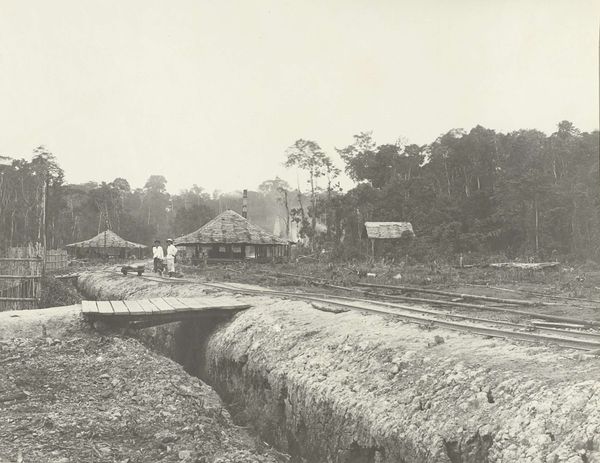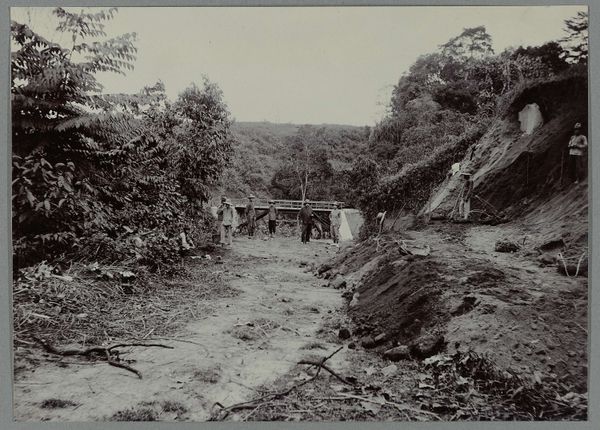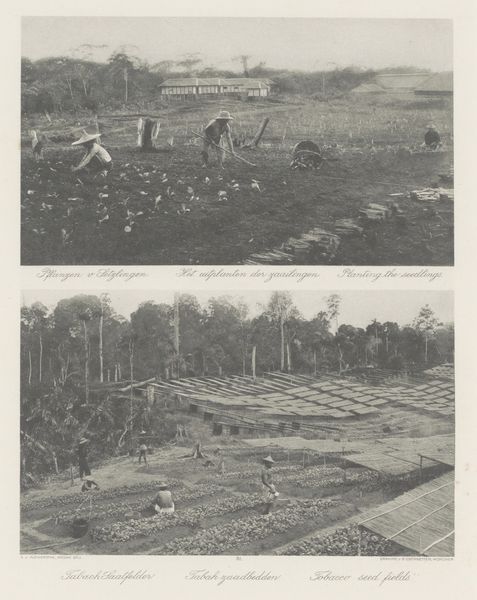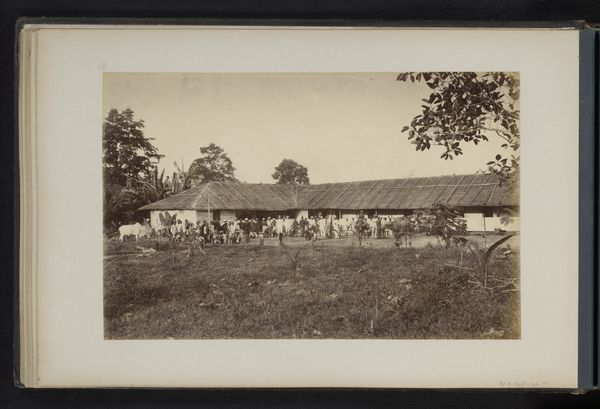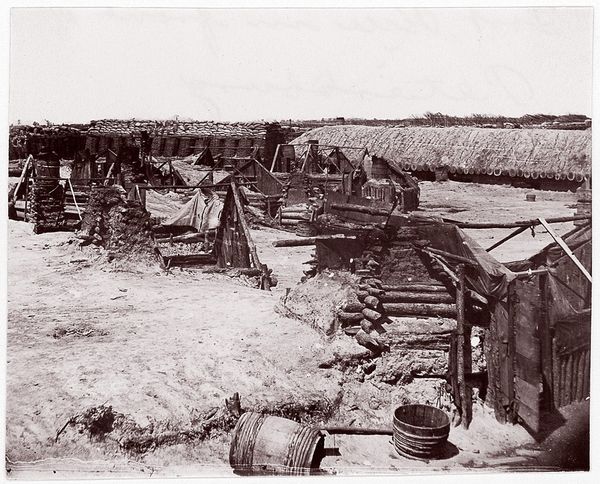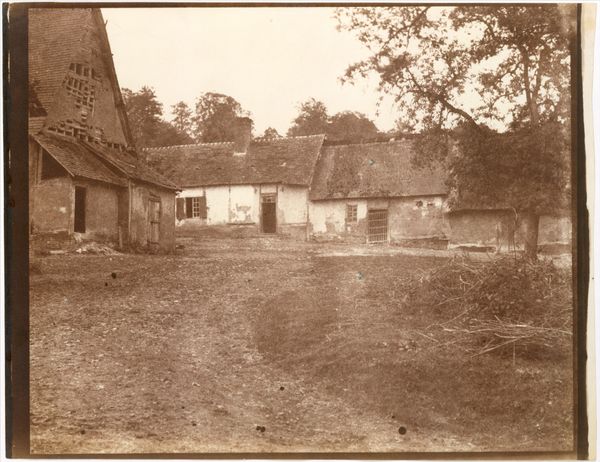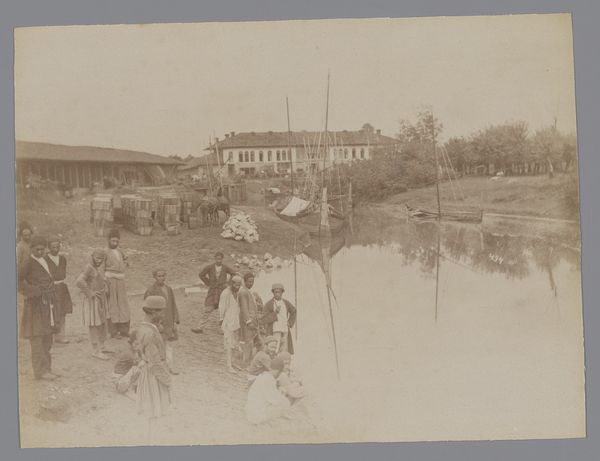
Transport van tabak per ossenkar naar een fermenteerschuur van een plantage op Sumatra before 1898
0:00
0:00
carljkleingrothe
Rijksmuseum
print, photography
#
print photography
# print
#
landscape
#
archive photography
#
photography
#
orientalism
#
realism
Dimensions: height 180 mm, width 284 mm
Copyright: Rijks Museum: Open Domain
Editor: This is an image entitled "Transport van tabak per ossenkar naar een fermenteerschuur van een plantage op Sumatra," placing us in Sumatra sometime before 1898. It looks like a print of a photograph. I find it interesting how much of the scene is dominated by the tobacco plants themselves, almost dwarfing the people. What do you see in this piece? Curator: I see a landscape imbued with the weight of history, visualized through its composition. The eye is drawn, yes, to the dense tobacco, but also to the workers and their ox-drawn carts. The act of transport becomes symbolic, carrying not only the crop, but the implications of colonial labor, across the visual field and into the fermentation barn. What emotions arise when considering the cultural symbols of agrarian life against that colonial backdrop? Editor: Well, the repeating shapes of the tobacco leaves do have a hypnotic effect. They’re visually interesting, but your reading also highlights a darker, more complex story than just an exotic landscape. Curator: Precisely! Think about the barn—it signifies not only harvest and production, but also perhaps the structures of control and processing of resources during that era. The symbols present a multi-layered narrative, simultaneously picturesque and burdened. Do you think we're equipped to decode all its intricacies? Editor: I doubt it, but learning to recognize even a few of those layers definitely deepens the experience of viewing it. Curator: Indeed. Understanding the historical and cultural context helps unlock the profound symbolic language embedded within this seemingly simple landscape.
Comments
No comments
Be the first to comment and join the conversation on the ultimate creative platform.
